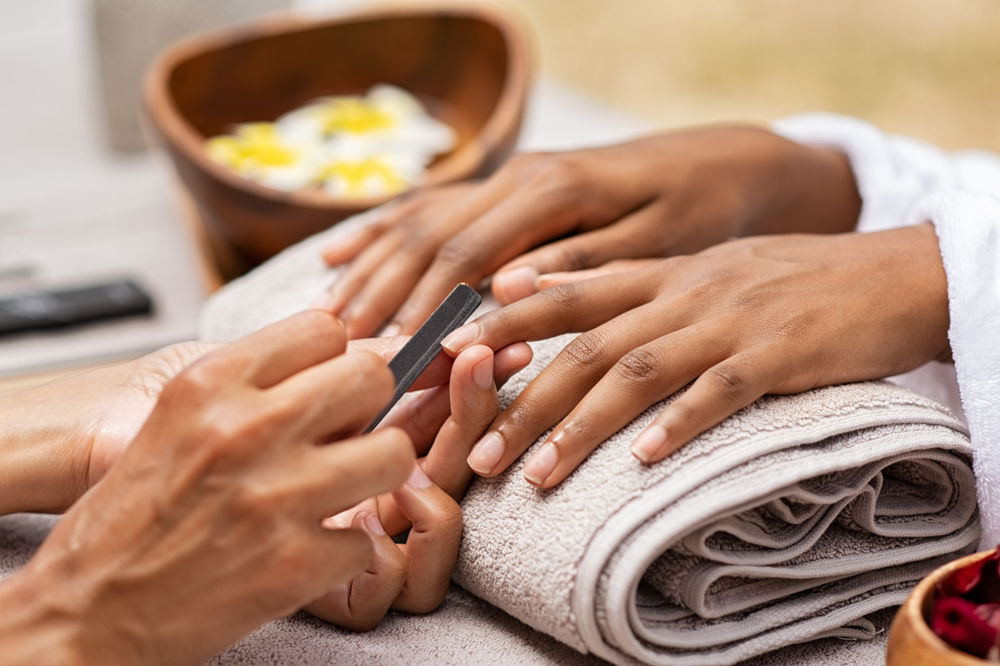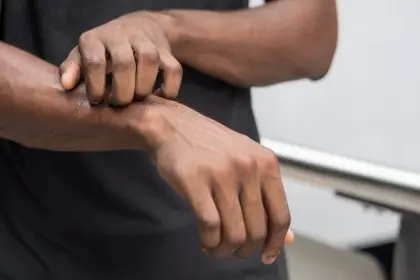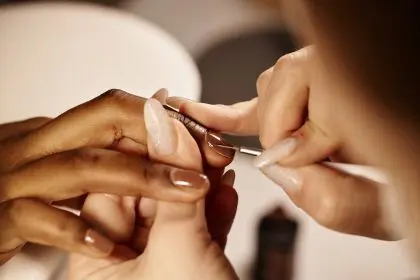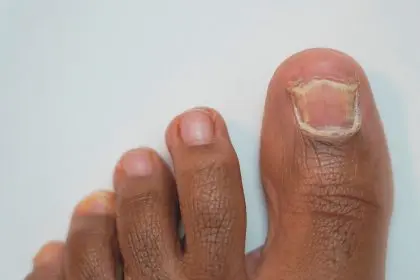Nail fungus, a common yet often overlooked issue, can be contracted from various sources, including nail shops. This condition can lead to discomfort, unsightly nails, and even more severe health problems if left untreated. Understanding how to treat nail fungus effectively is crucial for maintaining healthy nails and overall well-being.
Understanding nail fungus
Nail fungus, also known as onychomycosis, is a fungal infection that affects the toenails or fingernails. It usually begins as a white or yellow spot under the tip of the nail and can spread deeper into the nail, causing discoloration, thickening, and crumbling at the edge. The fungus thrives in warm, moist environments, making nail shops a potential breeding ground if proper hygiene is not maintained.
How does nail fungus spread in nail shops?
Nail shops can become a source of nail fungus if they do not adhere to strict hygiene practices. Common ways the fungus spreads include:
- Contaminated tools: If tools like nail clippers, files, or buffers are not properly sterilized between clients, they can carry fungal spores from one person to another.
- Unsanitary foot baths: Foot baths that are not cleaned and disinfected after each use can harbor fungus, which can infect the next client.
- Improper nail care practices: Cutting cuticles or nails too short can create openings for fungi to enter.
Recognizing the symptoms of nail fungus
Early detection of nail fungus is essential for effective treatment. Key symptoms to look out for include:
- Discoloration of the nail (white, yellow, or brown)
- Thickening of the nail
- Brittleness or crumbling of the nail edges
- Distorted nail shape
- A foul odor coming from the infected nail
Effective treatments for nail fungus
Treating nail fungus promptly can prevent it from worsening and spreading to other nails. Several treatment options are available, ranging from home remedies to medical interventions.
Home remedies
For mild cases of nail fungus, home remedies can be effective:
- Tea tree oil: Known for its antifungal properties, applying tea tree oil directly to the affected nail can help eliminate the fungus.
- Apple cider vinegar: Soaking the infected nails in water and apple cider vinegar can create an acidic environment that inhibits fungal growth.
- Baking soda: A paste from baking soda and water can be applied to the nails to absorb moisture and combat fungus.
Over-the-counter treatments
Several over-the-counter (OTC) antifungal treatments are available:
- Antifungal creams and ointments can be applied directly to the nails to kill the fungus.
- Medicated nail polish: Some OTC nail polishes contain antifungal agents that help treat the infection.
Prescription medications
For more severe or persistent cases, prescription medications may be necessary:
- Oral antifungal drugs: Medications like terbinafine and itraconazole are commonly prescribed to treat nail fungus from the inside out.
- Topical antifungal treatments: A healthcare provider may recommend Prescription-strength creams and ointments.
- Medicated nail lacquer: Ciclopirox is a prescription nail lacquer that can be applied to the nails to treat fungal infections.
Laser treatment
Laser treatment is a newer option for treating nail fungus. It involves using a laser to heat and destroy the fungus without damaging the surrounding tissue. This method is typically used for stubborn infections that do not respond to other treatments.
Preventing nail fungus from nail shops
Preventing nail fungus is as important as treating it. Here are some tips to reduce the risk of contracting nail fungus from nail shops:
- Choose reputable nail shops: Select nail salons that follow stringent hygiene protocols. Look for salons that use sterilized tools and disposable liners for foot baths.
- Bring your tools: To avoid contamination, consider bringing your nail care tools to the salon.
- Inspect the salon: Ensure that the salon is clean and that the technicians wash their hands and wear gloves when performing nail services.
- Avoid nail injuries: Be cautious not to injure your nails or cuticles during nail treatments, as this can create entry points for fungi.
When to see a doctor
While many cases of nail fungus can be treated with home remedies and OTC products, there are times when medical attention is necessary. Consult a doctor if:
- The infection is severe or spreading to other nails.
- Home treatments are not effective after a few weeks.
- You have diabetes or a weakened immune system, as nail infections can lead to more serious complications.
Conclusion
Nail fungus contracted from nail shops is a common issue that requires prompt and effective treatment. Recognizing the symptoms early and using appropriate treatments can prevent the fungus from causing further damage. Additionally, taking preventive measures when visiting nail salons can help reduce the risk of infection. Maintaining healthy nails is a matter of aesthetics and an important aspect of overall health. Remember, if in doubt, seek professional medical advice to ensure the best possible outcome for your nail health.
This story was created using AI technology.










